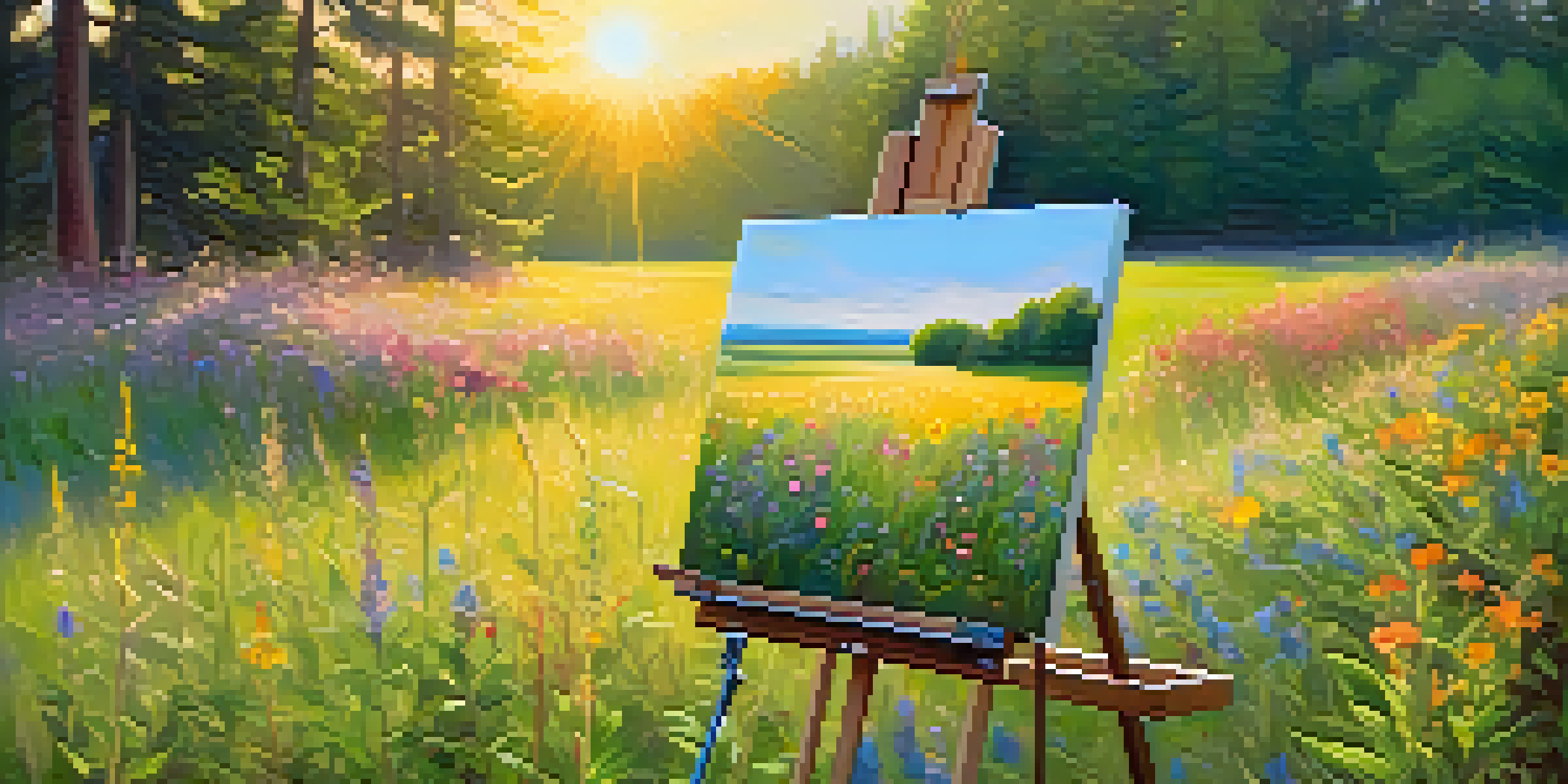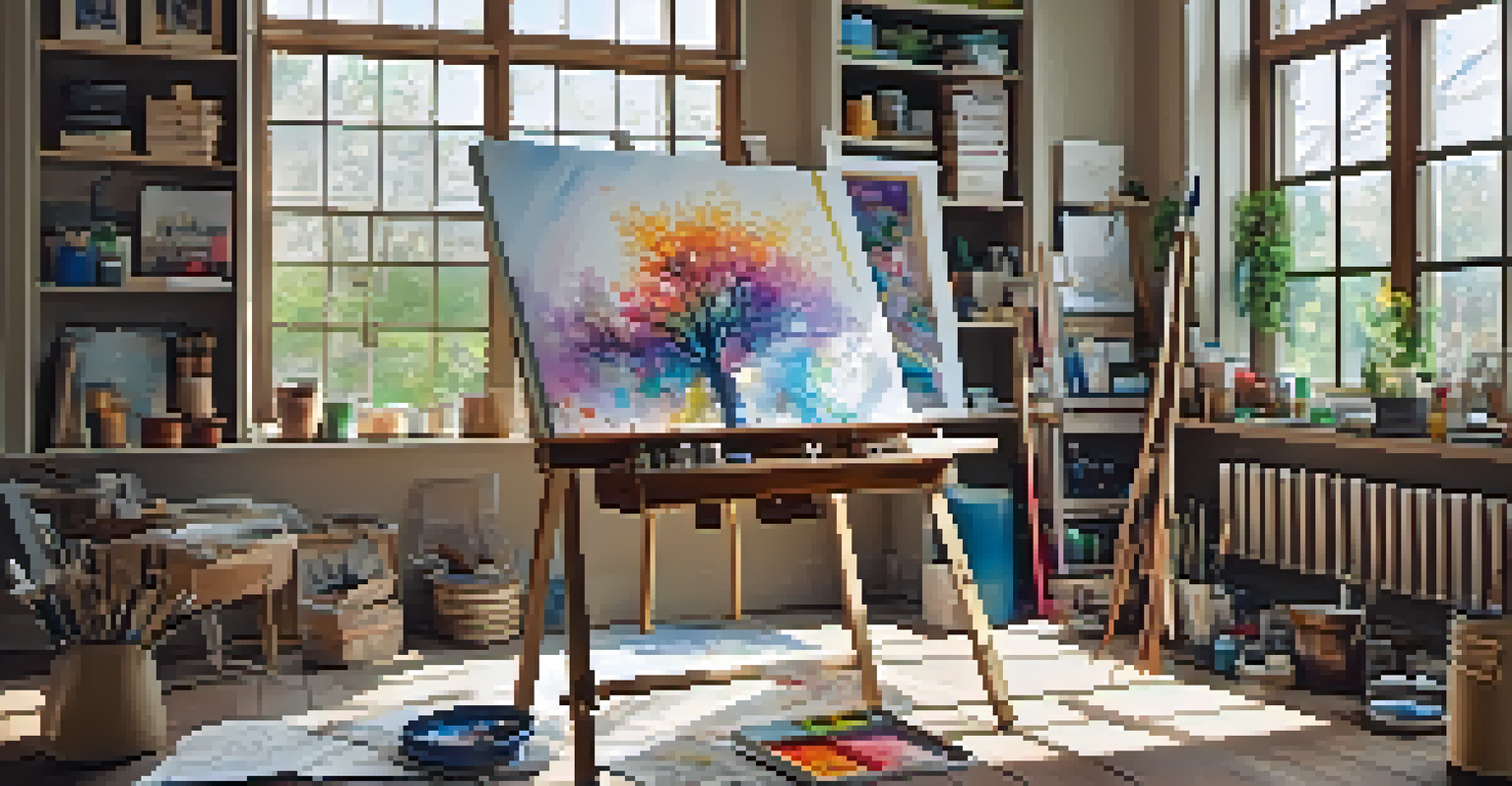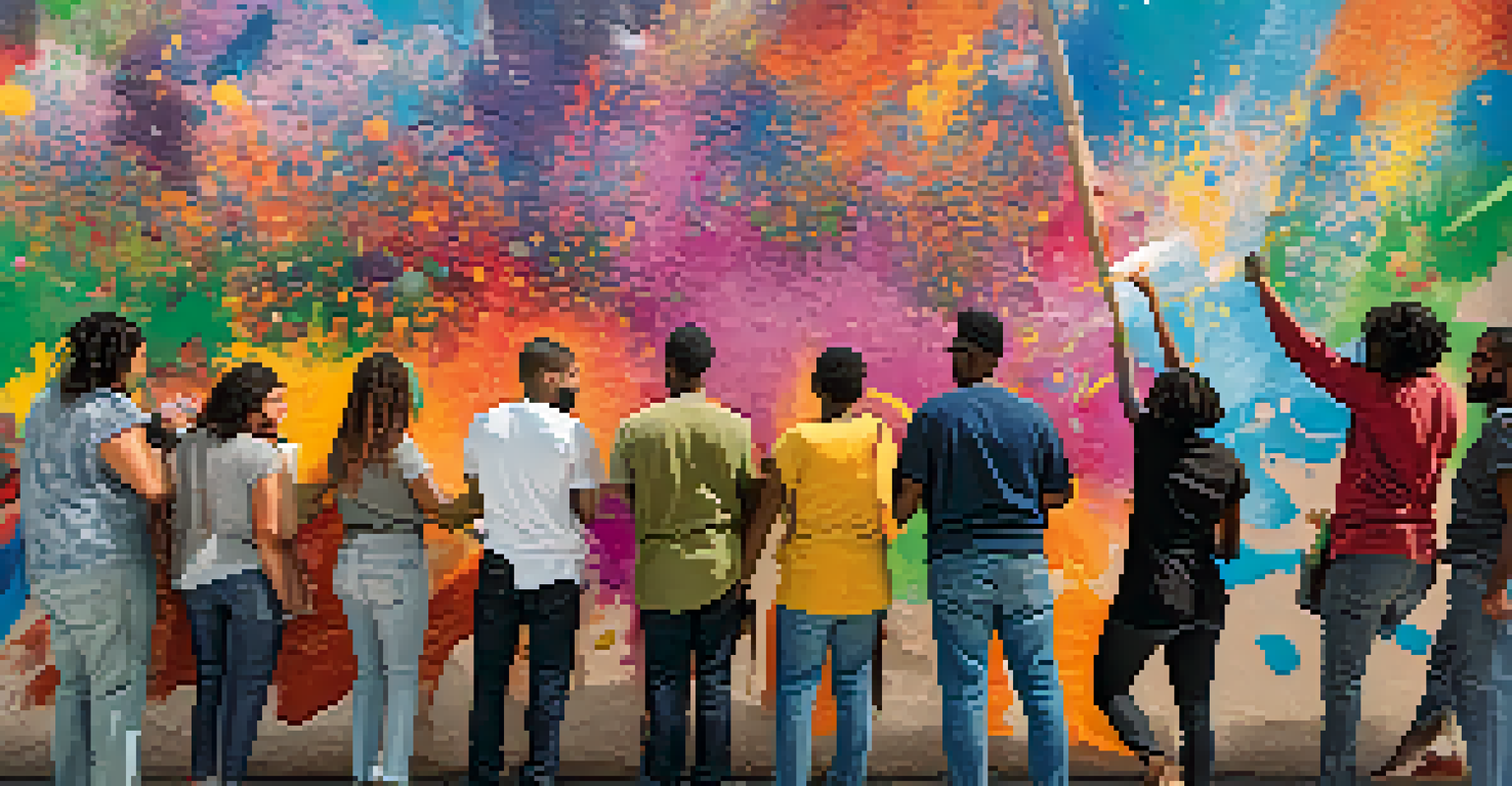Express Yourself: The Transformative Power of Artistic Creation

The Essence of Artistic Expression in Our Lives
Artistic expression is a fundamental aspect of the human experience. From painting and music to dance and writing, creativity allows individuals to convey their thoughts and feelings in a unique way. It serves as a bridge between our inner worlds and the outside, helping us connect with others on a deeper level.
Every artist was first an amateur.
Think about a time when a song perfectly captured your mood or a painting left you breathless. These moments remind us that art isn’t just about aesthetics; it’s a powerful tool for expression and communication. It allows us to share our stories, struggles, and triumphs, making us feel less alone in our journeys.
Moreover, engaging in artistic activities can also enhance our emotional well-being. It offers a safe space to explore and process complex emotions, transforming feelings of confusion or sadness into something tangible and meaningful.
Art as a Tool for Personal Transformation
Creating art can be a transformative experience, allowing individuals to discover new aspects of themselves. When we let our creative instincts flow, we often uncover hidden talents or passions that were previously buried. This process of exploration can lead to profound personal growth and self-awareness.

Consider how many people have turned to art during difficult times. For instance, someone dealing with grief may find solace in painting or writing, helping them navigate their emotions. This creative outlet not only assists in processing feelings but can also result in beautiful pieces that reflect their journey.
Art as a Means of Connection
Art transcends language and cultural barriers, fostering empathy and understanding among individuals.
Art can serve as a mirror, reflecting our experiences back to us. Through this reflection, we can gain insights into our identities and the world around us, ultimately fostering a stronger sense of self.
Connecting with Others Through Artistic Creation
Art has a unique ability to connect people, transcending language and cultural barriers. When we share our creative work, we invite others into our experiences and perspectives, fostering empathy and understanding. This connection is especially powerful in group settings, such as workshops or collaborative projects.
Art enables us to find ourselves and lose ourselves at the same time.
Imagine a community art project where individuals from diverse backgrounds come together to create a mural. Each person contributes their unique story and perspective, resulting in a piece that celebrates their collective experiences. This not only beautifies the environment but also strengthens community bonds.
Furthermore, art can spark conversations about important social issues, encouraging dialogue and reflection. By sharing our stories through artistic creation, we can inspire others to share theirs, creating a ripple effect of connection and understanding.
The Therapeutic Benefits of Creating Art
Art therapy is a recognized form of healing that utilizes creative expression to improve mental health. Through various artistic mediums, individuals can explore emotions, reduce anxiety, and process traumatic experiences. This therapeutic approach emphasizes the importance of the creative process rather than the final product.
For many, engaging in art provides a form of mindfulness, promoting relaxation and focus. Activities like painting, sculpting, or even coloring can serve as a break from the chaos of everyday life, allowing individuals to immerse themselves in the present moment. This can lead to reduced stress and improved emotional resilience.
Therapeutic Benefits of Art
Creating art serves as a powerful therapeutic tool, helping individuals explore emotions and improve mental health.
Moreover, art therapy offers a non-verbal outlet for those who struggle to articulate their feelings. This can be especially beneficial for children or individuals with communication difficulties, providing them with a means to express themselves and foster emotional healing.
The Role of Art in Cultural Identity and Expression
Art plays a vital role in shaping and expressing cultural identity. Through various forms of artistic expression, communities convey their histories, values, and beliefs, preserving their unique heritage. This cultural storytelling can be seen in traditional crafts, music, dance, and visual arts.
For instance, indigenous art often reflects the connection to land and spirituality, serving as a powerful reminder of cultural roots. When these artistic traditions are shared, they educate others and inspire appreciation for diverse cultures, fostering respect and understanding.
In our increasingly globalized world, art can also serve as a platform for marginalized voices. By highlighting underrepresented perspectives, artists can challenge societal norms and provoke thought, contributing to a richer, more inclusive narrative.
Finding Your Unique Artistic Voice
Every individual has a unique artistic voice waiting to be discovered. Whether you’re a seasoned artist or a complete beginner, embracing your creativity is a journey of self-exploration. The key is to let go of self-judgment and allow yourself to create freely, without the pressure of perfection.
Consider experimenting with different mediums and styles to see what resonates with you. Maybe you find joy in sketching, or perhaps you feel a connection to music. The process of exploring different forms of expression can be enlightening and invigorating, helping you uncover your personal artistic voice.
Discovering Your Artistic Voice
Embracing creativity is a journey of self-exploration, allowing individuals to uncover their unique artistic expression.
Remember, there are no rules in art. Each creation is a reflection of your experiences, emotions, and thoughts. Embracing this individuality not only enhances your artistic practice but also fosters a deeper connection to your own identity.
Embracing the Journey of Artistic Creation
Artistic creation is not just about the finished product; it’s about the journey. Each brushstroke, note, or word is a step in a process that allows for exploration and growth. Embracing this journey can enrich your experience, making the act of creating itself a form of mindfulness and self-discovery.
As you engage in artistic practices, remember to celebrate your progress, no matter how small. Each piece you create tells a story, capturing a moment in time and reflecting your evolving self. This perspective can transform how you view your work, shifting focus from perfection to personal expression.

Ultimately, the transformative power of artistic creation lies in its ability to connect us with ourselves and others. By embracing the journey of creativity, we invite growth, healing, and a deeper understanding of the world around us.